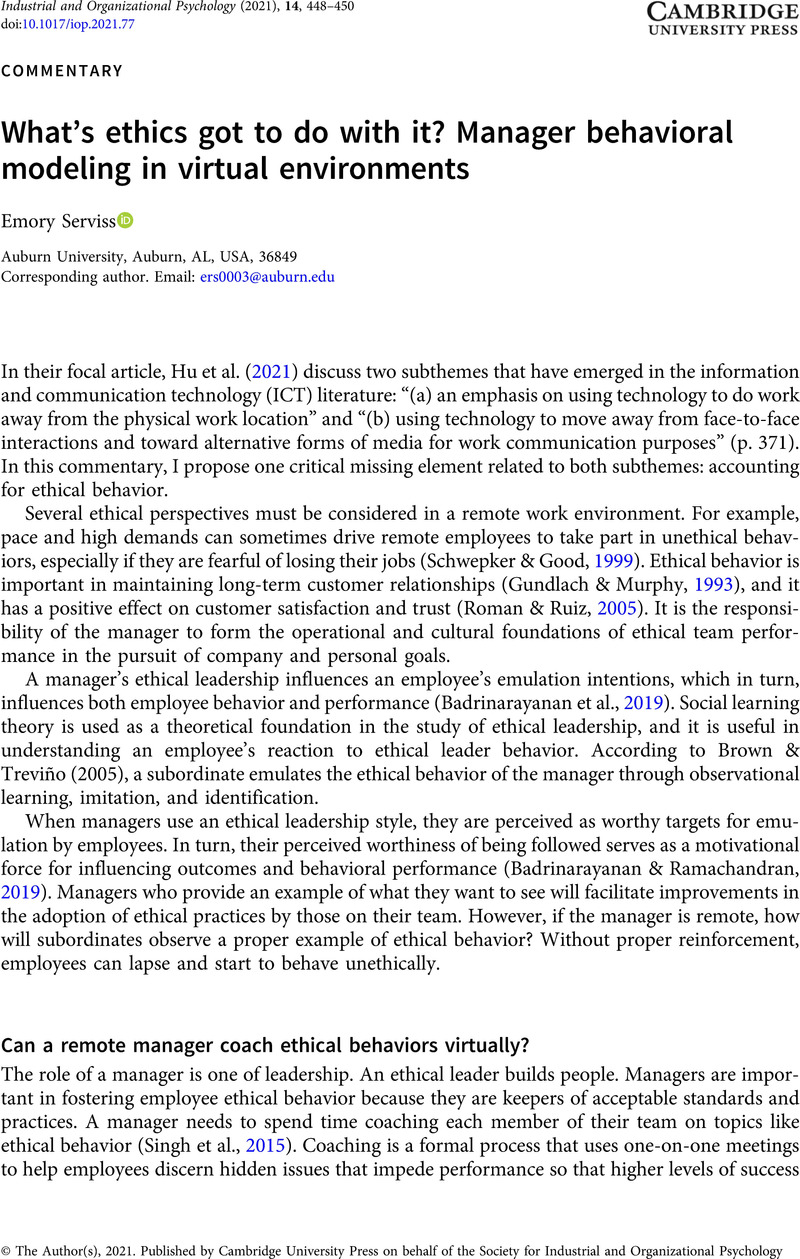Article contents
What’s ethics got to do with it? Manager behavioral modeling in virtual environments
Published online by Cambridge University Press: 22 September 2021
Abstract

- Type
- Commentaries
- Information
- Copyright
- © The Author(s), 2021. Published by Cambridge University Press on behalf of the Society for Industrial and Organizational Psychology
References
- 1
- Cited by




